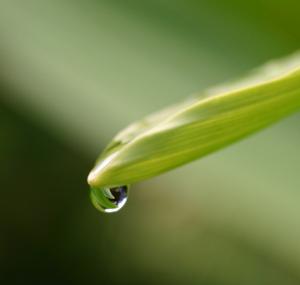Less rainfall expected for the Hawaiian Islands according to scientists
University of Hawaiʻi at MānoaOutreach Specialist, International Pacific Research Center
Oliver Timm
Assistant Researcher, International Pacific Research Center
Almost imperceptibly, rainfall over the Hawaiian Islands has been declining since 1978, and this trend is likely to continue with global warming through the end of this century, according to a team of scientists at the University of Hawaiʻi at Mānoa and the University of Colorado at Boulder.
This latest Hawaiʻi rainfall study, published in the March 13, 2013, early online issue of the Journal of Geophysical Research, supports previous work conducted at the University of Hawaiʻi. What has been unclear, however, is whether this drying trend will continue.
“For water resource and ecosystem management, and for other societal needs, we need to know whether this drying trend will continue this century,” said lead investigator Oliver Elison Timm at the International Pacific Research Center at UH Mānoa.
As of now, not even cutting edge climate models have enough resolution to capture the diverse rainfall pattern over Hawaiʻi, where dry and wet areas often lie only a mile or even less apart.
To work around this problem, the team devised a method called ‘statistical downscaling.’ They first got a take on the effects of the general drying trend on local heavy-rain days by reanalyzing observations from 1978 to 2010 at 12 rain-gauge stations spread throughout the islands. Studying hundreds of weather patterns during such days, they identified the typical atmospheric circulation patterns in the North Pacific that favor heavy rains over Hawaiʻi.
“The patterns we saw did not surprise us,” recalled Elison Timm. “For example, we found that the typical winter Kona storms with moist air-flow from the South often produce torrential rains in the islands.”
Using those weather patterns linked to heavy rains, the team developed a statistical model that estimates the number of heavy rain events during a year. They found that the large circulation patterns over the mid-latitude and tropical North Pacific have already shifted since 1978 so that fewer weather disturbances reach the Islands during the rainy season from November through April.
“We can’t predict individual rain events with our method,” clarified Thomas W. Giambelluca, Professor in the Department of Geography at UH Mānoa, “but it gives us a very good estimate of the number of heavy rain events in a given season based on the large-scale atmospheric circulation patterns.”
Combining information from their statistical model and cutting-edge climate models driven with the projected increase in greenhouse gases until the end of this century, the scientists conclude that we can expect the recent trend towards drier winter seasons with fewer heavy-rain days to continue through the end of this century.
“It is extremely difficult to take all the uncertainties into account and our overall result may not apply to all sites in Hawai‘i,” cautioned Senior Researcher Henry Diaz from the University of Colorado. “We are just beginning to understand the details of how climate change will affect the Hawaiian Islands. We do not know yet how further warming will impact extreme heavy downpours.”
Citation:
Oliver Elison Timm, Mami Takahashi, Thomas W. Giambelluca, and Henry F. Diaz, 2013: On the Relation between Large-Scale Circulation Pattern and Heavy Rain Events over the Hawaiian Islands: Recent Trends and Future Changes. Journal of Geophysical Research, (early online-release in March 2013, http://onlinelibrary.wiley.com/doi/10.1002/jgrd.50314/abstract)
Funding:
The project was supported by grants from the U.S. Fish and Wildlife Service through the Pacific Island Climate Change Cooperative and the Pacific Islands Climate Science Center. Additional funding was provided jointly by the U.S. Army Corps of Engineers, Honolulu District, and the Commission on Water Resource Management, Hawaiʻi Department of Land and Natural Resources.
Researcher Contacts:
Oliver Elison Timm is Assistant Researcher at the International Pacific Research Center, School of Ocean and Earth Science and Technology, University of Hawai'i at Mānoa. Email: timm@hawaii.edu; phone: (808) 956-0958.
Thomas W. Giambelluca is Professor of Geography at the University of Hawai'i at Mānoa. Email: thomas@hawaii.edu; phone: (808) 956-7390.

